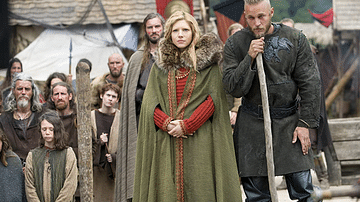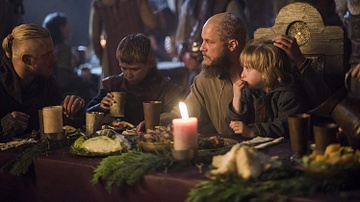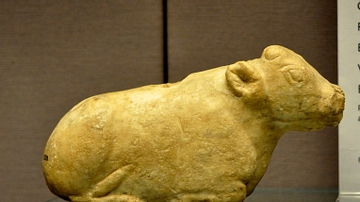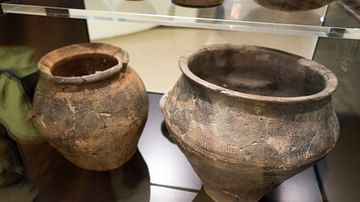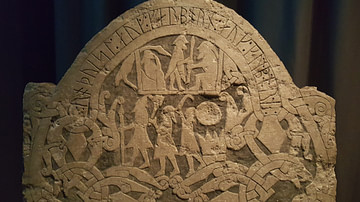Illustration
More than a thousand years ago, Vikings living on the Swedish Island of Gotland erected carved stone slabs to commemorate fallen warriors and heroic deeds. This stone is called the "Broa Stonem" and it dates to c. 700-800 CE. Today, these ancient picture stones and runestones, which often depicted Norse myths and gods, are considered the most direct and authentic source of information about Norse mythology. The bottom of these picture stones always shared a common motif: a scene of a large Viking shop with its sail unfurled, perhaps carrying fallen warriors to the afterlife. The top scene of this picture stone depicts a female figure holding a cup or horn of mead, welcoming a man on a horse. Some Viking scholars believe this figure represents the goddess Freya, while others interpret the figure as a Valkyrie, which was one of the female deities who flew over battlefields and selected which soldiers would live or die. (Gotland Museum, Visby, Sweden.)
About the Author
Cite This Work
APA Style
Wiener, J. B. (2018, December 12). Viking Era Broa Stone. World History Encyclopedia. Retrieved from https://www.worldhistory.org/image/9707/viking-era-broa-stone/
Chicago Style
Wiener, James Blake. "Viking Era Broa Stone." World History Encyclopedia. Last modified December 12, 2018. https://www.worldhistory.org/image/9707/viking-era-broa-stone/.
MLA Style
Wiener, James Blake. "Viking Era Broa Stone." World History Encyclopedia. World History Encyclopedia, 12 Dec 2018, https://www.worldhistory.org/image/9707/viking-era-broa-stone/. Web. 24 Apr 2025.



